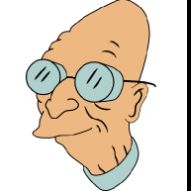-
Posts
1,629 -
Joined
-
Last visited
Reputation Activity
-
 h_d reacted to RichZep in Colours in Publisher
h_d reacted to RichZep in Colours in Publisher
Hi h_d. Thank you. Goodness knows how I missed this. Must be the heat getting to me.
-
 h_d got a reaction from Alfred in Colours in Publisher
h_d got a reaction from Alfred in Colours in Publisher
I would guess that the colour format of the 'sage' document is CMYK and the colour format of the 'vibrant' document is RGB. You can check this by going to the File menu and choosing Document Setup, Colour tab:
RGB:
CMYK:
The CMYK version will give a closer representation of the printed copies. Vibrant greens render well on a computer screen but tend to get muddy when printed in four-colour process.
-
 h_d got a reaction from bbrother in Existing Slices Not Able to Export From an Imported Layer
h_d got a reaction from bbrother in Existing Slices Not Able to Export From an Imported Layer
I tried what you're describing and a brief test suggests it works if you insert the new image into the 'empty' .afphoto template by going to the Photo persona, then File > Place the full image into the empty layer stack, rather than copying and pasting.
Switch back to the Export persona and the slices are where they should be, above the image.
Haven't got time right now to go into more detail but hope it helps.
-
 h_d reacted to LuckyOne777 in New User figuring out Affinity 2 tool bar / Mac OS
h_d reacted to LuckyOne777 in New User figuring out Affinity 2 tool bar / Mac OS
Hi H-D,
Yes! this was the problem. Thank you for responding. much appreciated
-
 h_d got a reaction from LuckyOne777 in New User figuring out Affinity 2 tool bar / Mac OS
h_d got a reaction from LuckyOne777 in New User figuring out Affinity 2 tool bar / Mac OS
First thing to check:
Pull down the View menu and make sure that Show Tools is ticked:
-
 h_d reacted to Champ in CMYK not coming out as expected
h_d reacted to Champ in CMYK not coming out as expected
Yeah understood, 👍, I found a nifty website page, which I tested today with printers and they gave me the thumbs up that it's much more readable.
I've ordered a test print and been assured it will look good so can't wait.
-
 h_d got a reaction from Champ in CMYK not coming out as expected
h_d got a reaction from Champ in CMYK not coming out as expected
Is the printer a real-life person with whom you have human contact, or a web service?
If the former, then have a one-to-one conversation with them and ask them to test your next file before printing.
If the latter, then you're limited to what they offer on their website and they're probably offering a one-size-fits-all approach. It's possible that they're printing in CMYK but expect their customers to upload an RGB document. (It's certainly the case that PNG files cannot be saved as CMYK - to check this, open your originally exported PNG in Affinity Photo and check its colour format - it will be RGB.)
My suggestion would be to create your design in RGB, then add a Soft Proof adjustment layer at the top of the layer stack. You will be asked for a CMYK Profile. If your printer doesn't tell you which profile they need, and offer it for download, then (a) they're a pretty useless printer and (b) try 'Generic CMYK profile'.
The Soft Proof adjustment will give you a preview of what your RGB design will look like when printed in CMYK. Some colours will be muted, because CMYK has a narrower gamut (range of available colours) than RGB, especially if you are working on a very bright screen that isn't calibrated for CMYK work.
With the Soft Proof adjustment layer in place you can adjust the colours of your RGB image to get your design closer to what you'll see in the printed version. Before you export the design, though, you must either delete or turn off the Soft Proof adjustment. Do not leave it on, and do not merge it with the RGB design. Your RGB document may now look 'wrong', but your finally printed version should be closer to what you saw with the Soft Proof adjustment in place.
-
 h_d got a reaction from werfox in CMYK not coming out as expected
h_d got a reaction from werfox in CMYK not coming out as expected
Is the printer a real-life person with whom you have human contact, or a web service?
If the former, then have a one-to-one conversation with them and ask them to test your next file before printing.
If the latter, then you're limited to what they offer on their website and they're probably offering a one-size-fits-all approach. It's possible that they're printing in CMYK but expect their customers to upload an RGB document. (It's certainly the case that PNG files cannot be saved as CMYK - to check this, open your originally exported PNG in Affinity Photo and check its colour format - it will be RGB.)
My suggestion would be to create your design in RGB, then add a Soft Proof adjustment layer at the top of the layer stack. You will be asked for a CMYK Profile. If your printer doesn't tell you which profile they need, and offer it for download, then (a) they're a pretty useless printer and (b) try 'Generic CMYK profile'.
The Soft Proof adjustment will give you a preview of what your RGB design will look like when printed in CMYK. Some colours will be muted, because CMYK has a narrower gamut (range of available colours) than RGB, especially if you are working on a very bright screen that isn't calibrated for CMYK work.
With the Soft Proof adjustment layer in place you can adjust the colours of your RGB image to get your design closer to what you'll see in the printed version. Before you export the design, though, you must either delete or turn off the Soft Proof adjustment. Do not leave it on, and do not merge it with the RGB design. Your RGB document may now look 'wrong', but your finally printed version should be closer to what you saw with the Soft Proof adjustment in place.
-
 h_d got a reaction from R C-R in New User figuring out Affinity 2 tool bar / Mac OS
h_d got a reaction from R C-R in New User figuring out Affinity 2 tool bar / Mac OS
First thing to check:
Pull down the View menu and make sure that Show Tools is ticked:
-
 h_d reacted to Gnobelix in Letter spacing in the Publisher
h_d reacted to Gnobelix in Letter spacing in the Publisher
Thank you very much for the tips.
Have a nice weekend, everyone
Cheers
-
 h_d got a reaction from Gnobelix in Letter spacing in the Publisher
h_d got a reaction from Gnobelix in Letter spacing in the Publisher
Horizontal scale distorts the letter shapes, so that won't help.
Kerning applies to specifically defined pairs of letters, so that won't help either.
Tracking affects the overall letterspacing, but in Affinity Publisher it is set and displayed as a relative percentage (presumably of the default letterspacing) and can't be converted to/from an absolute distance:
I think the closest you can get if you want to set ('determine'?) the letterspacing to 2mm is to draw two vertical guides, 2mm apart. Create a small sample of type at the desired size. Align the right edge of the first character of your text to the left-hand guide, select all the text and increase the tracking in the character panel until the left-hand edge of the second character aligns to the right-hand guide:
(I also adjusted the ruler origins to align to the right of the O.)
This will give you a percentage tracking figure you can use for that font at that size.
The tracking percentage will vary with the type size, so you can't use this as an absolute measure - it would have to be altered for each font and size. But's that's the best I can suggest.
-
 h_d got a reaction from Ron P. in Can't get rid of the Artboard
h_d got a reaction from Ron P. in Can't get rid of the Artboard
OK try this on a backup copy, not the original.
In the Layers panel, click on the top layer inside the Artboard and then shift-click on the bottom layer. This will select all the layers contained by the Artboard, but not the Artboard itself.
Cmd-x (macOS) or ctrl-x (Windows) to cut those layers.
Select the Artboard layer in the Layers panel and delete it.
Cmd-v (macOS) or ctrl-v (Windows) to paste the cut layers back into the Layers panel, without the Artboard.
Just to repeat - work on a backup copy.
-
 h_d got a reaction from Walter Nissen in [Publisher/Photo] Create grid-style collage from multiple pictures?
h_d got a reaction from Walter Nissen in [Publisher/Photo] Create grid-style collage from multiple pictures?
Hi @Roter_Rabe and welcome.
Here's one way.
In Publisher, enable View - Show Grid:
Then choose View - Grid and Axis and set up a grid with the Spacing set to your desired 'equal spacing' Here I've used 5mm, not subdivided:
Close the dialog, then go to View - Snapping and enable Snap to Grid:
Close the dialog and use the Picture Frame Rectangle Tool (F) to design your layout:
The shapes will 'snap' to the gridlines to help you maintain the spacing (spot the mistake above).
Once you're happy with the layout, click on each frame in turn, choose File - Place, navigate to your chosen image and select it. Hide the Grid and Margins from the View menu, and check the results:
You can adjust the positioning and size of the images using the Move tool.
-
 h_d reacted to user_0815 in is it Comfortable to use Apple Magic Trackpad-2 while working on Affinity Photo ?
h_d reacted to user_0815 in is it Comfortable to use Apple Magic Trackpad-2 while working on Affinity Photo ?
Fully agree. With the 3 finger drag you can flick the object by keeping two fingers down and flick with the third one. I often do that on my MBP trackpad for longer distances. The object will roll like a marble. 😄
-

-
 h_d got a reaction from augustya in is it Comfortable to use Apple Magic Trackpad-2 while working on Affinity Photo ?
h_d got a reaction from augustya in is it Comfortable to use Apple Magic Trackpad-2 while working on Affinity Photo ?
Just a suggestion: Combined with @tudor's advice about tap-to-click which really speeds up and eases muscle movement, deeply buried in System Settings - Accessibility - Pointer Control - Trackpad Options... is this:
Setting the lower two options as above gives a one-finger 'tap and drag', which I've used for years with all the Affinity apps and others. It works really well for me for dragging and highlighting, although you do have to give a second tap to release the dragged object/highlighting, which might not suit everyone.
This is on an integrated laptop trackpad rather than a standalone Magic Trackpad. One difference between the two is that the surface of the Magic version is tilted up toward the back, unlike a laptop trackpad or drawing pad. Which again might suit everyone.
If you have the opportunity, it would be worth visiting an Apple Store or reseller and ask if they'll let you test one.
-

-
 h_d reacted to walt.farrell in Musicscore notation Fonts required in publisher , which to choose ?
h_d reacted to walt.farrell in Musicscore notation Fonts required in publisher , which to choose ?
There is a less manual workflow, though, using Autoflow:
Help: https://affinity.help/publisher2/en-US.lproj/pages/Media/placeImagesAutoflow.html
-
 h_d reacted to Rufusbadger in I have a 50 page PDF and need to create a single page PDF and I need help please.
h_d reacted to Rufusbadger in I have a 50 page PDF and need to create a single page PDF and I need help please.
@h_d this automator function worked a treat. Many many thanks for the time you took to detail the steps. I would never have worked this out. 30 years ago, I would have but not now!
Thank you
-
 h_d got a reaction from Alfred in I have a 50 page PDF and need to create a single page PDF and I need help please.
h_d got a reaction from Alfred in I have a 50 page PDF and need to create a single page PDF and I need help please.
This isn't specifically Affinity-related but hopefully it will help someone...
NB: in the course of setting this up, if you get dialogs asking if you want to give Automator permission to run the Finder or access files/folders, you should OK them.
Decide on or create a folder in which to create the single pdfs. (I created a new one on my Desktop called PDFs.) Launch Automator from your Applications folder.
In the first dialog, click New Document:
In the second dialog, click Workflow:
This will open an Untitled workflow window. On the left hand side is the Library, which lists categories of ‘Actions’ - the building blocks of your workflow.
Click the Files & Folders category of the Library. The next panel across will show a list of Actions specifically related to working with the file system:
The right-hand Workflow panel is currently empty. Drag and drop an Ask for Finder Items Action into it from the list of Actions. You could set the Prompt to ‘Choose a multi-page PDF’, but there’s no need to change any other settings or options.
Now drag a Filter Finder Items Action into the right-hand Workflow panel. This will link up with the first Action so they will work together in a flow.
Set the conditions to Kind is PDF. This will mean the workflow will ignore anything that isn't a PDF. Click the PDFs category in the Library window. Drag the Split PDF Action into the empty area of the workflow panel. Again it will chain up with the preceding two Actions.
From the Save Output to: pull-down, choose Other and then navigate to the PDFs folder you created in Step 1. (You could also create a new folder at this stage if you wanted.) You can tweak the other settings in this Action if required to give the pages custom names or replace existing PDFs with the same names. Up to you. Save the Workflow (anywhere you like) with a File Format of Workflow, giving it a meaningful name. I called mine PDF Splitter. Click the Run button in the top right. You will be asked to choose a file. Navigate to your multi-page pdf and Choose.
The workflow will run, and the individual page files will appear in your PDFs folder, numbered sequentially.
There are all sorts of other things you could do - save it as an Application (drag the big pdf onto it); save it as a Quick Action (right-click on a PDF and split it). But those are the basics. -
 h_d got a reaction from Rufusbadger in I have a 50 page PDF and need to create a single page PDF and I need help please.
h_d got a reaction from Rufusbadger in I have a 50 page PDF and need to create a single page PDF and I need help please.
No worries @Rufusbadger, I'll put some instructions together and get back to you.
-
 h_d reacted to NathanC in Publisher 2: Table panel display bug
h_d reacted to NathanC in Publisher 2: Table panel display bug
Hi @h_d,
This is a known issue currently logged with the developers, I've updated the issue and bumped it with your report.
-
 h_d got a reaction from Alfred in How can I "distress" the stroke on lettering?
h_d got a reaction from Alfred in How can I "distress" the stroke on lettering?
It depends on how you've 'created lettering'.
You could try:
Use Artistic Text to write the words and colour the text:
Duplicate the layer in case you need to revert. Then select the top layer and Convert to Curves from the Layer menu:
Select all the individual letter curves in the Layers panel, then Layers>Geometry>Merge Curves:
With the Move or Node tool active, apply a stroke to the merged letter curves from the Stroke pull-down:
Change the stroke style to Texture Line Style:
With the merged letter curves layer still selected, play around with the Vector Brushes until you find something that works for you:
-
 h_d reacted to bobdobbs in How can I "distress" the stroke on lettering?
h_d reacted to bobdobbs in How can I "distress" the stroke on lettering?
Thank you!
This process makes a great addition to my armory.
-
 h_d got a reaction from bobdobbs in How can I "distress" the stroke on lettering?
h_d got a reaction from bobdobbs in How can I "distress" the stroke on lettering?
It depends on how you've 'created lettering'.
You could try:
Use Artistic Text to write the words and colour the text:
Duplicate the layer in case you need to revert. Then select the top layer and Convert to Curves from the Layer menu:
Select all the individual letter curves in the Layers panel, then Layers>Geometry>Merge Curves:
With the Move or Node tool active, apply a stroke to the merged letter curves from the Stroke pull-down:
Change the stroke style to Texture Line Style:
With the merged letter curves layer still selected, play around with the Vector Brushes until you find something that works for you:




